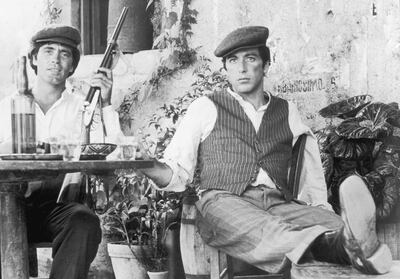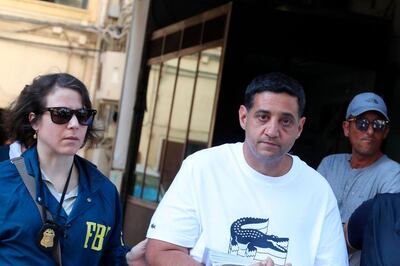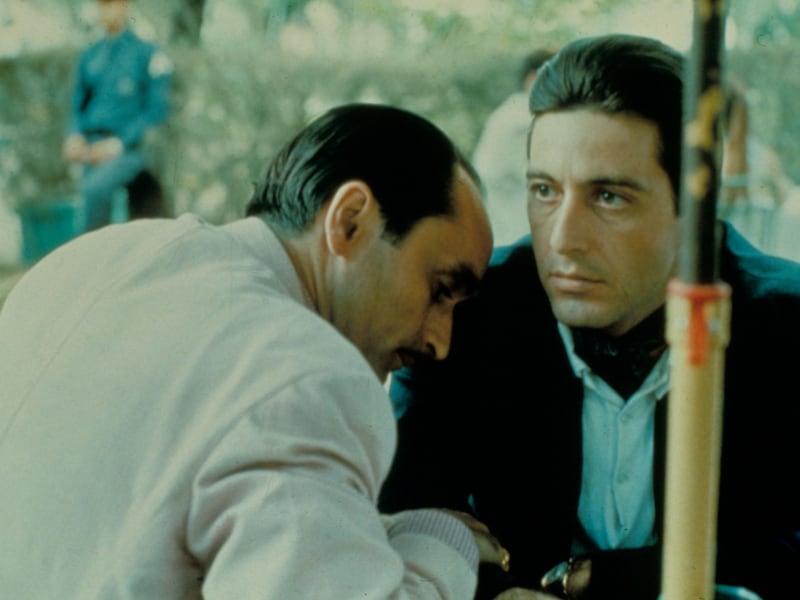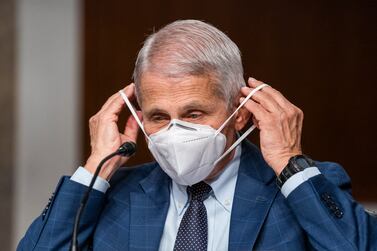The US isn't just a "land of opportunity", but of second chances. And now some of the most notorious criminals in US history are enjoying a spectacular and profitable comeback via the quintessentially American manoeuvre of public redemption.
It has been like this from the beginning. Many of the English settlers, who established the colonies that became the United States, were consciously and openly seeking to reinvent themselves.
The Puritans of New England and Quakers of the Delaware Valley were seeking to become ruling religious factions rather than persecuted minorities. Countless immigrants, noteworthy and obscure, still relocate from the old worlds of Europe, Asia and Africa looking for an opportunity to literally reinvent themselves.
It is a proud tradition to take on new names, change identities, and “assimilate” into the American melting pot, often wiping away a sordid past. Even without immigration, similar transformations are a central and celebrated theme of American popular culture.
One of the most important American novels, The Great Gatsby, is precisely about a wealthy, celebrated man who is widely and correctly suspected of having gained riches through organised crime, specifically bootlegging.
It is the country that elected Donald Trump as its president and could conceivably do it again. Charisma and a good story overcome most other obstacles in US culture.
Ageing Mafiosi are providing the latest redemption tales.

The process began as soon as figures of “Cosa Nostra” ("Our Thing" in Italian), began testifying against their former friends. The memoirs of the first major Mafia turncoat, a mid-level hoodlum called Joseph Valachi, written with the journalist Peter Maas, became a bestseller in 1968. The Valachi Papers was even made into a Charles Bronson movie in 1972.
That same year Francis Ford Coppola’s masterpiece The Godfather, and the best-selling novel it was based on, spurred a Mafia-oriented revolution in American popular culture. The Godfather provided the template to replace the stale old western genre with a new kind of gangster movie that reflected key US cultural figures: dangerous mavericks outside the law who can nonetheless supply justice where state authority breaks down, rugged individual anti-heroes who make their own laws and use violence to defend their honour.
Maas’s book and The Godfather, book and movie, defined a market. But gangland memoirs rarely make anyone rich and are a one-off.
Social media now provides podcast and video forums allowing ex-hoodlums to market themselves as celebrities and entertainers embodying the venerable American tradition of public redemption.
Sammy "The Bull" Gravano, former underboss of the Gambino crime family – an Italian-American organised gang that is one of the Cosa Nostra "Five Families" in New York City – illustrates how this sordid process plays out. After Gravano broke ranks and testified against his former boss and partner John Gotti, he collaborated with none other than Mass in the 1997 book Underboss.

Despite laws intended to prevent killers from profiting from their crimes, courts allowed Gravano to ultimately keep the $250,000 Maas paid him. Predictably enough, he then formed a drug ring with his children in Arizona, which eventually resulted in a 20-year sentence. He was released in 2017.
Yet Gravano is enjoying a resurgence in status and income online. He and other former mobsters of varying ranks have fashioned a new mass media genre through podcast reminiscences and commentaries.
Gravano, who is reportedly battling Covid-19, poses as an unrepentant mobster. Despite breaking the single most important organisational rule and testifying, he preposterously claims to be a living embodiment of Cosa Nostra.
That puts him at odds with many other practitioners of the former-Mafioso genre who present a more traditional American narrative of redemption through religious conversion.
His biggest competitor, and frequent supposed antagonist, is Michael Franzese, a former captain in the Colombo crime family. Franzese primarily markets himself as a born-again Christian.
The two have had obviously staged shouting matches about whether or not the Mafia is inherently evil and destructive.
Similar new brand names include John A Gotti, son of the infamous Gambino leader; and his former associate John Alite, who, naturally, testified against him. Noteworthy lesser lights include the former Bath Avenue Crew member Jimmy Calandra, who also claims, a bit more convincingly than Franzese, to have found God. So do Anthony Ruggiano Jr and many others who promote themselves as born-again "motivational speakers".
It is striking that all these former mobsters seem to adopt a blue-collar conservative and pro-Trump political orientation. Predictably, their podcasts also promote highly dubious narratives.
Gravano may or may not peddle total fabrications, yet his accounts are transparently and crudely self-serving, casting himself as an admirable antihero. And he hasn't added much substantial to the narrative in Underboss.
Most disturbing is the media collusion in repackaging and marketing ageing killers as inspiring or entertaining public figures.
Last week, ABC broadcast a shoddy cut-and-pasted two hour "special" on Gravano, largely based on an old interview from the 1990s. ABC acknowledged his heinous record by examining his role in the mob killings of his former best friend Louie Milito and also his own brother-in-law Nicholas Scibetta.
Both men were working with the mafia, and can be cast as fair game in the kill-or-be-killed ruthlessness of "that life". Gravano often peddles the transparent fiction that "we only kill each other".
ABC didn't mention that in his 1994 plea deal, in exchange for his testimony he was granted a stunningly lenient five-year sentence for the 19 murders he admitted to. It included time already served, and he walked away after a few months.
In that plea, he formally confessed to the 1977 murder of 16-year-old Alan Kaiser, an innocent bystander who witnessed Gravano and Milito commit a murder. To ensure his silence, the teenager was immediately gunned down. No one knew why or by whom he was killed until the plea agreement.
ABC never mentions Kaiser. Neither did Maas. Gravano has offered an implausible excuse at odds with his sworn plea statement.
Americans love a redemption story. They sell very well.
The ambiguous image being carefully constructed around “Sammy The Bull” is menacing enough to provide a patina of authenticity and aura of "toughness,” but with Godfather-like antihero elements deeply-rooted in American culture and the westerns.
But the murderer of Alan Kaiser cannot be repackaged as the latest Jay Gatsby. It doesn't leave any crucial grey areas. Like the 16-year-old witness, it had to go.
But it is not just “Sammy The Bull” wiping him out now. That work is being done for and with him by some journalists and American news organisations that have no excuse.






